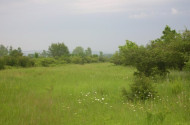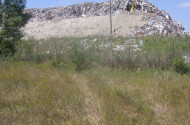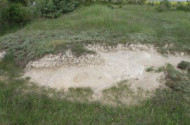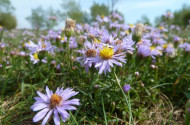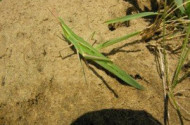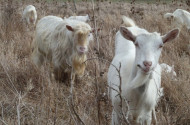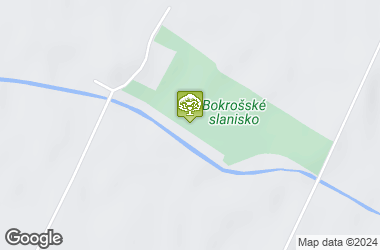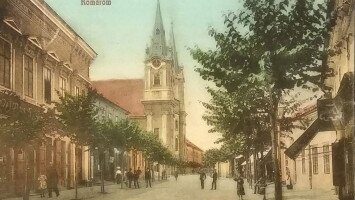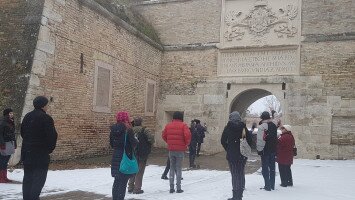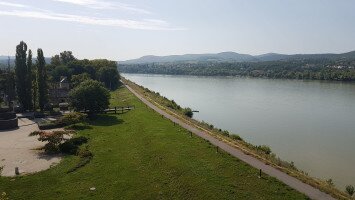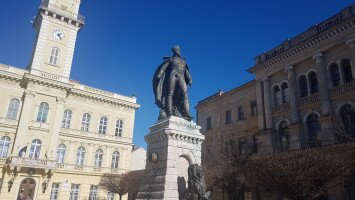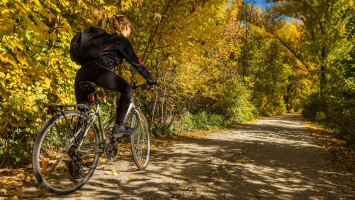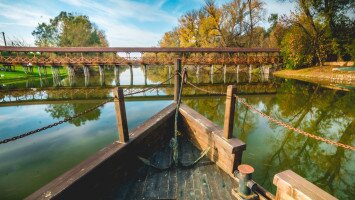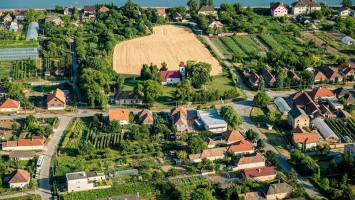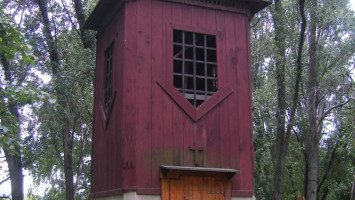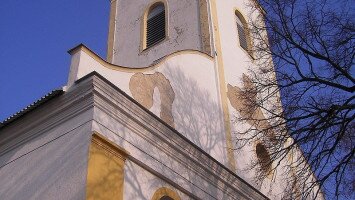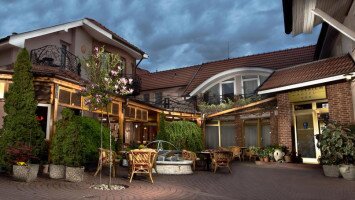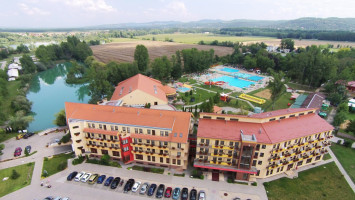
Bokros is located in the administrative area of the village Iža, north of the Iža canal. Due to the highly salty (high salinity) soil, the area is a habitat for special plant and animal species. The Bokros saline is small in size but represents a more significant natural value. It is unique not only by domestic but also by European standards, therefore since 2004 - Bokrosi has been part of the ecological network of European special nature conservation areas as a saline natural area of community importance, with an area of 10.2 ha. The area has been under Grade 4 protection as a Bokros Saline Protected Area since 1988, while the 100-meter buffer zone surrounding the area is covered by Grade 3 protection, as is the SCI as a whole.
THE NATURAL TREASURES OF BOKROS SALINE PROTECTED AREA
Bokros is a tiny island home to special salt-loving species in the middle of an intensively cultivated agricultural landscape. It is the northernmost extension of the Hungarian saline steppes. It is a European-important 1340 habitat: it identifies continental saline areas, which the EU considers to be a priority habitat type.
Salt-loving vegetation occurs only in a small part of the area, especially in the depressions - these places are recognized by the whitish-colored soil. Much of the protected area is a dry meadow, characterized by a diverse and multifaceted vegetation. The most special forms of vegetation are the so-called scales (blind vegetation). These are areas of extreme saline soil covered with sparse vegetation cover. During dry summers, deep fissures form in the soil.
In these areas, the critically endangered lamb Camphorosma annua is now only scattered. In Slovakia, 75% of the areas where it still occurred in the 1970s have now disappeared. A typical halophyte species is the endangered saline plantain Plantago maritima, which has adapted to the salty environment with its succulent structure. The typical plant of the saline steppes of the Pannonian region is the protected saline worm Artemisia santonicum, which prefers areas flooded in spring and drying out in summer.
Vegetation is also richer in areas with relatively lower salinity. The vegetation is typical of grasses such as the lean cuckoo Festuca pseudovina. The diverse vegetation of the saline area also includes endangered species such as the common sagebrush Podospermum canum, the succulent asters Tripolium pannonicum, and the saline sagebrush Bupleurum tenuissimum.
In Slovakia, critically endangered species include the wet agaric Senecio doria, the coastal lab atripe Atriplex littoralis and the marsh yarrow Centaurium littorale. Above all, the ecosystem of saline areas creates the right conditions for animal species that prefer the low vegetation of extensively farmed saline meadows and pastures. Among the invertebrates, the warty grasshopper Decticus verrucivorus, the sea green locust Aiolopus thalassinus or the Oschei meadow locust Chorthippus oschei can be found here.
The very rare helmeted locust Acrida ungarica occurs in the saline area, and its occurrence was confirmed in 2013.
Among the moths, the saline anthill Maculinea teleius and the large fire butterfly Lycaena dispar, both of species of Community importance, as well as the large oxen butterfly Maniola jurtina and the common butterfly Polyommatus icarus can be observed.
Reptiles of community importance are represented by the agile lizard Lacerta agilis in the saline area, during the migration one of the birds appears here e.g. the meadow pityer Anthus pratensis is. Among the songbirds of Community importance, the area is inhabited by the sagebrush Sylvia nissoria and the thorn beetle Lanius collurio. From the slightly higher vegetation at dusk, the characteristic sound of the catfish Crex crex or the more common quail Coturnix coturnix is heard. Two community birds of prey are foraging in this area - the brown meadow shark Circus aeruginosus in summer and the bluish meadow shark Circus cyaneus in winter.
Bokros saline used to be part of the large saline areas along the Danube, of which only fragments have survived. It was the nature of a steppe pasture, while the low vegetation maintained due to extensive grazing prevented the spread of woody and invasive species (flood species). In this way, human activity has created ideal conditions for saline species. Ever since grazing in the area has ceased, the occupation of woody and invasive species has begun.
In 1959, the entire saline area was plowed, with elm and poplar trees planted here. The elm trees have not survived, the poplar trees have partially recovered, and the southern edge of the area is still lined with hybrid poplar trees. In 1978, the grassland was re-plowed and afforested, this time with pedunculate oak, small-leaved linden, mountain maple and sticky alder, which were partly established in the central part of the area.
In the 60s of the 20th century, the Iža canal was formed on the southern edge of the saline, which to this day has a significant drainage effect on the area. On the northern shore of the riverbed, salt precipitates in the clayey layers, the layers being soaked by groundwater with a high mineral content. The saline area is interwoven with a network of ditches about 1 meter deep, which in the past were designed for drainage.
In the past, clay was produced in the area from which bricks were made. Saline ponds formed in the excavated pits, and moisture- and salt-loving vegetation appeared. These were the most valuable areas of saline, but were destroyed when a landfill was established on their site.
HOW CAN THIS UNIQUE VALUE BE PRESERVED?
Due to the adverse interventions, only a small part of the saline area remains today - next to the landfill, along the ditch and the fence. During their construction, the excavations revealed the potential of the area - spotting forms in the depressions, which are painted white by the salts precipitated on the surface. It is a habitat for rare halophyte plants.
The condition for the presence of saline is groundwater with adequate salinity, above all the maintenance of a sufficient groundwater level (in the capillary rise layer) and the drying out of the soil during the summer. Simply put, saline soils suitable for saline species must be preserved.
In order to preserve saline, it is essential to restore and maintain proper water management, above all the existence of adequate groundwater levels. This promotes evaporation and more salt accumulates in the top layer of soil. In order to offset the drainage effect of the Iža canal, a LIFE + project would create an underground waterproofing clay layer, which will ensure an increase in the groundwater level in the saline area of Bokros. In the future, it is essential to fill the smaller drainage ditches.
In order to preserve special saline plant and animal species, it is important to revive traditional forms of farming. Grazing of mixed flocks of sheep and goats contributes to the re-emergence of special saline species. With EU support, watering places and fences have been set up in the area, the latter preventing animals from accessing neighboring cultivated lands. Returning to traditional grazing is an ideal way to preserve the natural values described above.
Source: http://www.perlypodunajska.sk/europsky-vyznamne-lo...
Foto: V. Šefferová – Stanová, M. Janák, Anton Krištín, A. Szabóová
